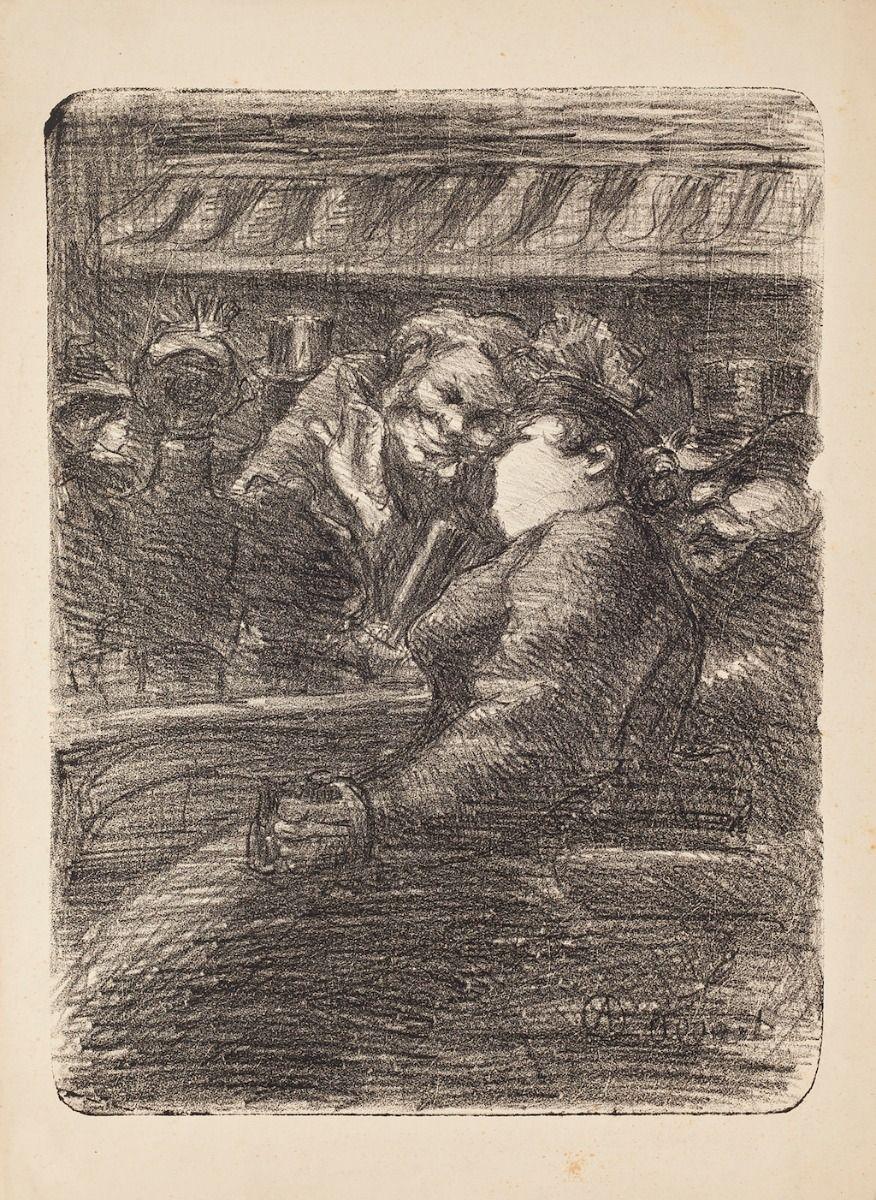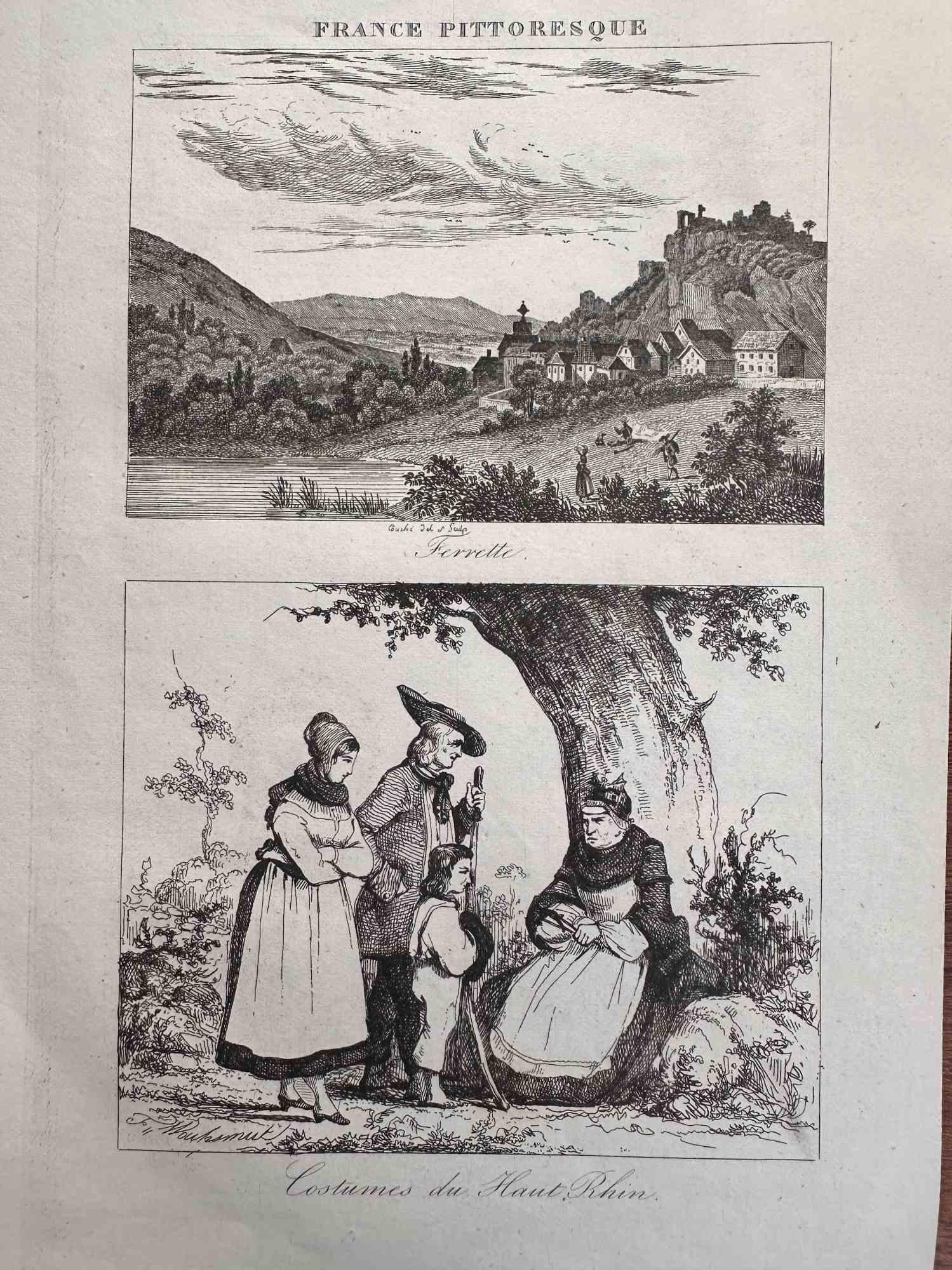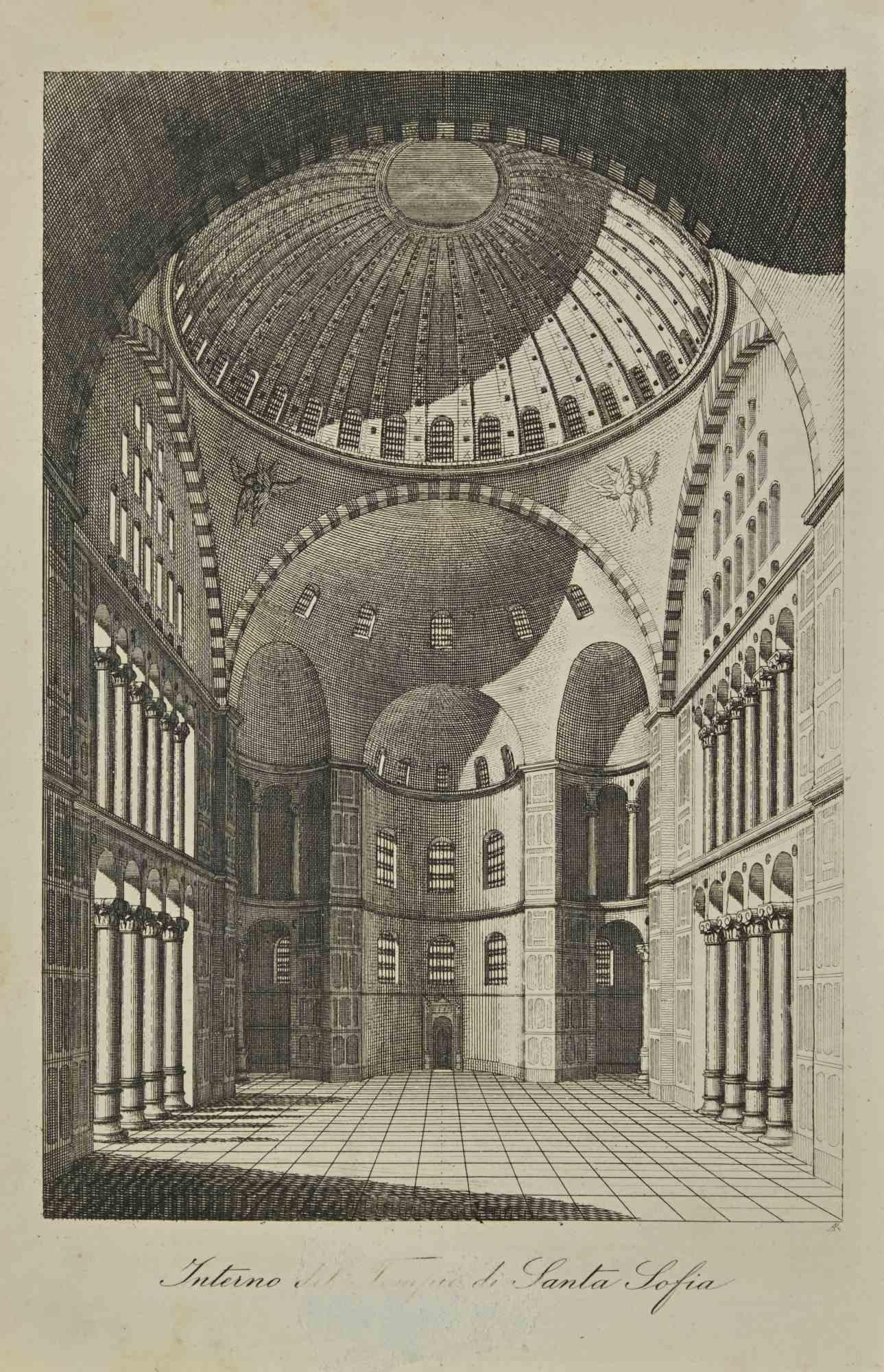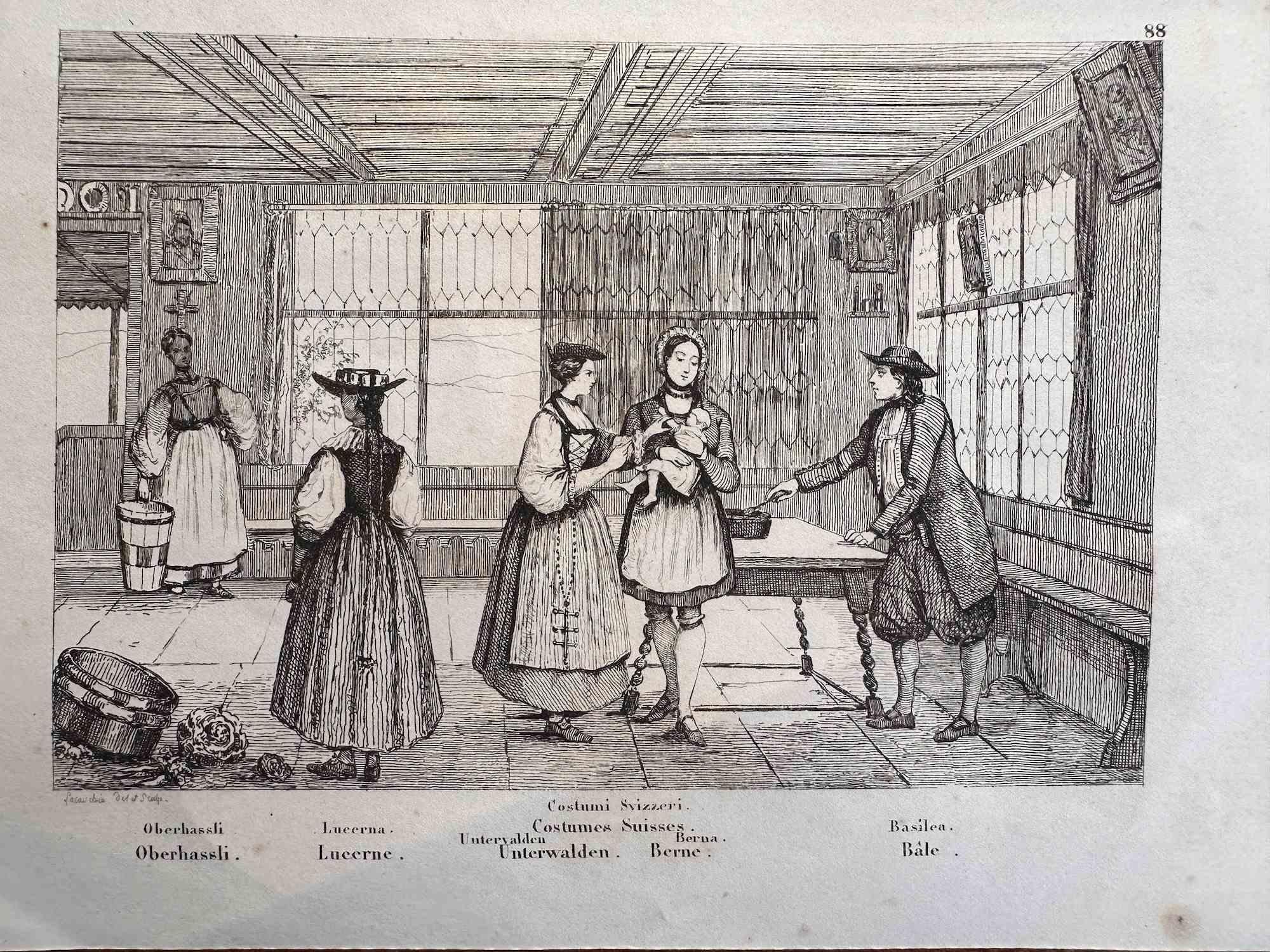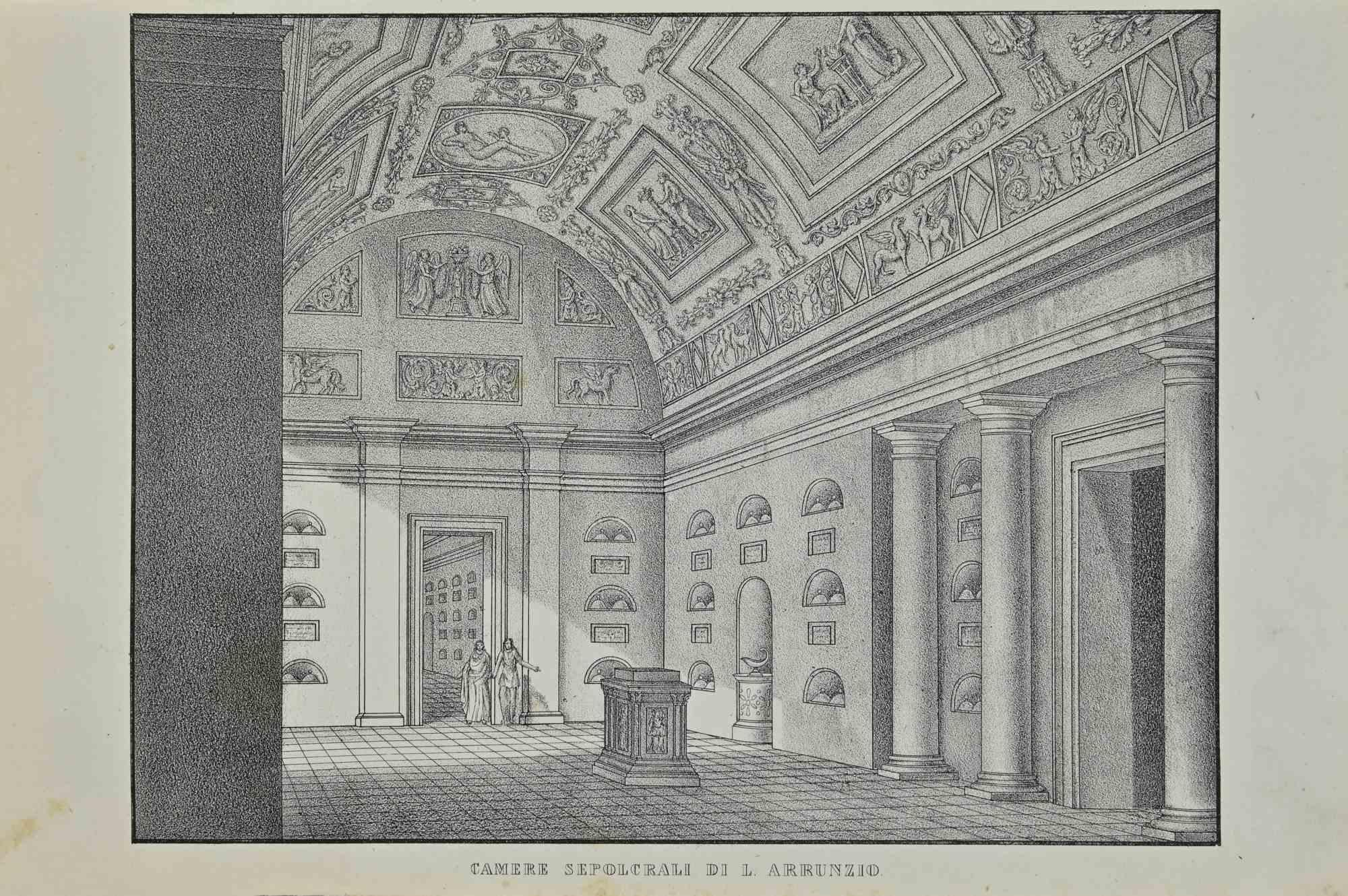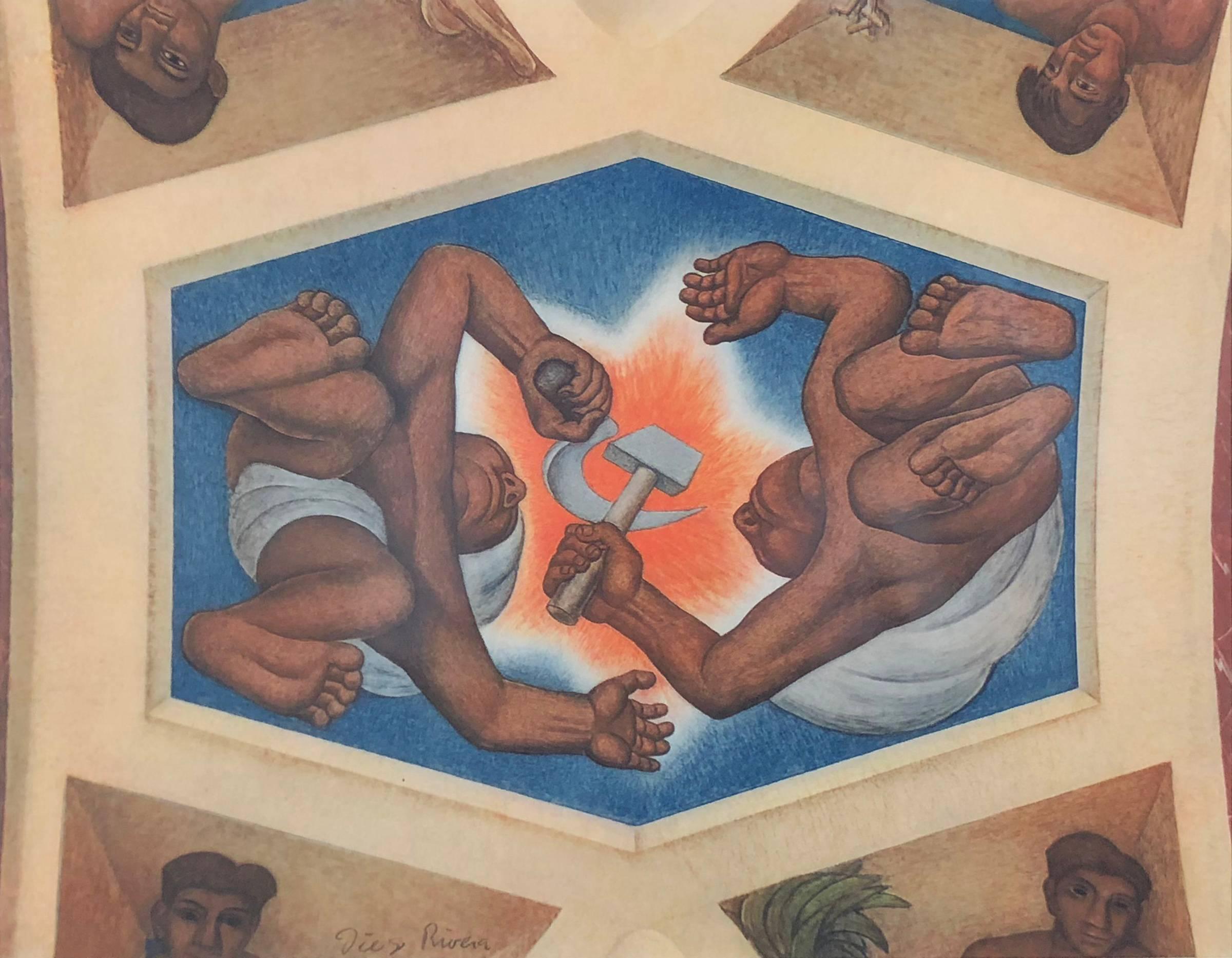George Grosz1936 Lithograph Interregnum Portfolio Windblown Man Small Edition Weimar Germany1936
1936
About the Item
- Creator:George Grosz (1891-1969, German)
- Creation Year:1936
- Dimensions:Height: 15.75 in (40 cm)Width: 11.42 in (29 cm)
- Medium:
- Movement & Style:
- Period:
- Condition:good. minor edge wear, toning.
- Gallery Location:Surfside, FL
- Reference Number:1stDibs: LU38213576592
George Grosz
George Grosz was a German artist known especially for his caricatural drawings and paintings of Berlin life in the 1920s. He was a prominent member of the Berlin Dada and New Objectivity group during the Weimar Republic. Grosz studied drawing at the Dresden Academy (1909–11) and at the School of Arts and Crafts in Berlin (1912–14). He was in the army from 1914–15, and again for a short time in 1917, but spent the rest of the war in Berlin, where he made violently anti-war drawings, in which his main focus was attacking the social corruption of Germany (capitalists, prostitutes, the Prussian military caste, the middle class). His artworks had great impact in the Berlin Dada movement, 1917–20, and collaborated with John Heartfield and Raoul Hausmann in the invention of photomontage.
Many of Grosz’s drawings were published in albums (Gott mit uns, Ecce Homo, Der Spiesser-Spiegel, etc.), and he was subject to prosecutions for insulting the army and blasphemy. He visited the United States in 1932 to teach at the Art Students League, New York, and settled there in 1933. In the latter part of his career, he tried to establish himself as a pure painter of landscapes and still life, but also painted many compositions of an apocalyptic and deeply pessimistic kind. His role in the Berlin Dada movement affected political outlooks and artistic developments not only in Germany, but also in Russia, the Balkan nations, and parts of France.
Grosz's penetrating, darkly humorous style of drawing and his use of satire as a weapon left a deep impression on the work of his contemporaries and the artists of the next generation. Some of his works from the early 1940s, particularly during World War II, do present an allegorical and dramatic representation of Grosz's moral perspective regarding war. Additionally, some of his last pieces from 1958 were photomontages, and hearken back to his earlier Dadaist aesthetic and message, passing judgment upon consumerism and suggesting that his absorption with American culture had ended in disappointment. In 1959, Grosz sold his house and moved back to Berlin. He died shortly after his return, after a fall down the stairs.
- ShippingRetrieving quote...Ships From: Surfside, FL
- Return PolicyA return for this item may be initiated within 3 days of delivery.
- Vintage Russian Ukrainian Soldiers in Forest Scene Judaica Lithograph Jewish ArtBy Anatoli Lvovich KaplanLocated in Surfside, FLPencil signed and dated, Russian Soviet Judaica Lithograph. Anatoli Lwowitch Kaplan was a Russian painter, sculptor and printmaker, whose works often reflect his Jewish origins. His...Category
Mid-20th Century Modern Figurative Prints
MaterialsLithograph
- Machpela Cave Chevron 1969 Israeli Judaica Lithograph Baruch Nachshon Chabad ArtBy Baruch NachshonLocated in Surfside, FLBaruch Nachshon, was born in Mandatory Palestine in 1939, in the city of Haifa. Nachshon began to paint in early childhood, and developed his relationship to art and to artists throu...Category
1960s Modern Interior Prints
MaterialsLithograph
- 1936 Lithograph Interregnum Portfolio Butcher Shop Small Edition Weimar GermanyBy George GroszLocated in Surfside, FLHand lithography on BFK Rives French hand moulded paper Style: German New Objectivity (Neue Sachlichkeit) According to the frontis these were produced by Hand Lithography. According...Category
1930s Modern Interior Prints
MaterialsLithograph
- 1936 Lithograph Interregnum portfolio Artist Studio small edition Weimar GermanyBy George GroszLocated in Surfside, FLHand lithography on BFK Rives French hand moulded paper Style: German New Objectivity (Neue Sachlichkeit) According to the frontis these were produced by Hand Lithography. According...Category
1930s Modern Interior Prints
MaterialsLithograph
- Israeli Expressionist Yosl Bergner Modernist Lithograph Kibbutz Coffee GrinderBy Yosl BergnerLocated in Surfside, FLAbstract Composition, Coffee Grinder Hand signed in Hebrew Lower right. limited edition. Dimensions: H 18.5" x 24.9" Bergner, Yosl (Vladimir Jossif) (b Vienna, 13 Oct 1920). surrealist, surrealism. belongs to the generation of people uprooted from childhood landscapes and forced by circumstance to build a life elsewhere. Uniquely, he became an Israeli without shedding his Jewish cosmopolitan-refugee identity, an identity he zealously guarded in the melting pot of Israel of the "fifties" and "sixties". In the years that have passed since he acquired his art education at the Melbourne National Gallery Art School in Australia, concepts in the art world have changed many times over. from the Jewish paintings and the depictions of Australian Aborigines through the children of safed, the wall paintings, the masks, the angels and kings, the still lifes, the "Surrealistic" paintings, the toys and flowers, the paintings inspired by the Bird-head Haggadah, the Kafka paintings, the Pioneers, the Kimberley fantasy (about his father's excursion in 1933 to northern Australia, in search of a "territory for the Jews"), Brighton Beach and the seascapes inspired by Eugene Boudin, through the chairs in the "Kings of Nissim Aloni" episode to the "Zionists" and the recent "Tahies". "During the six years that Bergner has lived in Israel," wrote Eugene KoIb, Direct. or of the Tel Aviv Museum, in the catalog of the Bergner exhibit in 1957, "he has established himself among Israeli artists." Bergner was indeed one of the artists who represented Israel in the Venice Biennial (1956; 1958) and in the Sao Paulo Biennial in 1957; this, in spite of the fact that Yosl Bergner did not harness his art to serve the Zionist ethos, that being, at the time, the order of the day (his paintings were in fact rejected at first as being those of a "Diaspora Jew"); he didn't "naturalize" himself by alliance to the country's landscape or its special light, nor did he turn to abstract painting. Painter of "the Jewish condition". the painter involved in Nissim Aloni's theater and the popular illustrator of poetry books and literary texts, he stuck to the narrative which drew its images from his childhood world, from Yiddish and from the Jewish culture of Poland in whose bosom he grew, with its literature, theater and fantasy. From this point of view his position as an "outsider", first in Australia and later in Israel, like that of the European Jew on the periphery of the dominant culture, afforded him a special dialectic vantage point from which to view his human and cultural surroundings. He was and remains a figurative painter even when he verges on the abstract. Israeli painter of Austrian birth, active in Australia. He grew up in Warsaw. His father, the pseudonymous Jewish writer Melech Ravitch, owned books on German Expressionism, which were an early influence. Conscious of rising anti-Semitism in Poland, Ravitch visited Australia in 1934 and later arranged for his family to settle there. Bergner arrived in Melbourne in 1937. Poor, and with little English, his struggle to paint went hand-in-hand with a struggle to survive. In 1939 he attended the National Gallery of Victoria’s art school and came into contact with a group of young artists including Victor O’Connor (b 1918) and Noel Counihan...Category
Mid-20th Century Modern Figurative Prints
MaterialsScreen, Lithograph
- Israeli Jerusalem Judaica Sephardic Rabbi, Boy, Torah Art Drawing Bezalel SchoolBy Jossi SternLocated in Surfside, FLVibrant lithograph by Israeli master JOSSI STERN. on paper mounted to board. Sefardic Rabbi studying with son Torah. 23 x 21 framed 13.5 x 19.5 Hungary, b. 1923, d. 1992 Jossi (Yossi) Stern, son of David and Katerina, was born in the Bakon Hills of Hungary, in 1923. He was already drawing when at the age of ten he moved with his family from the Bakon Hill region to the considerably more cosmopolitan Budapest. Recognizing the looming threat of Hitler and the pending Nazi invasion of Hungary, in 1940, at the age of seventeen, the young artist made his way to Palestine aboard the Sakaria, an old ship heavily crowded with 2,300 other refugees. Before reaching the shores of Palestine, then under the British Mandate, the British Navy intercepted the ship and declared Stern and all those aboard illegal immigrants. Stern was sent to a prison camp where he remained incarcerated by the British for six months. In 1943, having spent a few years doing agricultural work, Stern was encouraged by close friends who recognized his artistic talent to enroll in the prestigious Bezalel School of the Arts in Jerusalem. An outstanding student, he eventually became a highly respected teacher of Graphic Arts at Bezalel. Stern is recognized in Israel as having been one of the country's premier artists. His drawings are exhibited and appear in many publications and museums worldwide. Stern was the recipient of numerous awards including the Jerusalem Medal as well as both the UNESCO and Herzl Prize. He was included in the exhibition New Bezalel Artists' House, Jerusalem Tel Aviv Museum, along with Artists: Ludwig Wolpert, Joseph Budko, Gershon Knispel, Gershon Avigdor Arikha, Maryan, Jacob Steinhardt, Ruth Schloss...Category
20th Century Modern Figurative Prints
MaterialsLithograph
- Conversation - Lithograph by Adolphe Albert - 20th CenturyLocated in Roma, ITConversation is an original lithograph artwork realized by Adolphe Albert (1855-1938). Signed on the plate, The state of preservation is very good. The artwork represents a convers...Category
20th Century Modern Figurative Prints
MaterialsLithograph
- Ancient Costume - Haut Rhine - Lithograph - Late 19th centuryLocated in Roma, ITAncient Costume - Haut Rhine is a lithograph print on paper in the Late 19th century. Good conditions. From the suite of "France Pittoresques, including costume of the world.Category
Late 19th Century Modern Figurative Prints
MaterialsLithograph
- Temple of Saint Sophia - Lithograph - 1862Located in Roma, ITTemple of Saint Sophia is a lithograph on paper realized in 1862. The artwork belongs to the Suite Uses and customs of all the peoples of the universe: " History of the government, ...Category
1860s Modern Figurative Prints
MaterialsLithograph
- Swiss Costume - Lithograph - Late 19th centuryLocated in Roma, ITSwiss Costume is a lithograph print on paper in the Late 19th century. Good conditions. From the suite of "France Pittoresques, including costume of the world".Category
Late 19th Century Modern Figurative Prints
MaterialsLithograph
- Uses and Customs - Burial Chamber - Lithograph - 1862Located in Roma, ITUses and Customs - Burial Chamber is a lithograph on paper realized in 1862. The artwork belongs to the Suite Uses and customs of all the peoples of the universe: " History of the g...Category
1860s Modern Figurative Prints
MaterialsLithograph
- Chapel of the Agricultural School, Chapingo (Ceiling Detail, Workers)By (after) Diego RiveraLocated in Missouri, MO(after) Diego Rivera "Chapel of the Agricultural School, Chapingo" (Ceiling Detail, Workers) 1933 from the portfolio "Frescoes of Diego Rivera" Published by the Museum of Modern Art, NY Size with the Matt: 18.5 x 13.5 inches Hand-Signed by the Artist Diego Rivera was born on December 13, 1886 in the mountain town of Guanajuato in Mexico. His mother was an ardent Catholic and his father was a rich and aristocratic revolutionary fighter and an atheist. Little Diego decided in favor of atheism. He swore his family had to leave Guanajuato when he was six because of his diatribes against the Church. When he was eleven he attended the San Carlos Academy of Fine Arts; his real teacher was Jose Posada...Category
1930s Modern Figurative Prints
MaterialsLithograph
